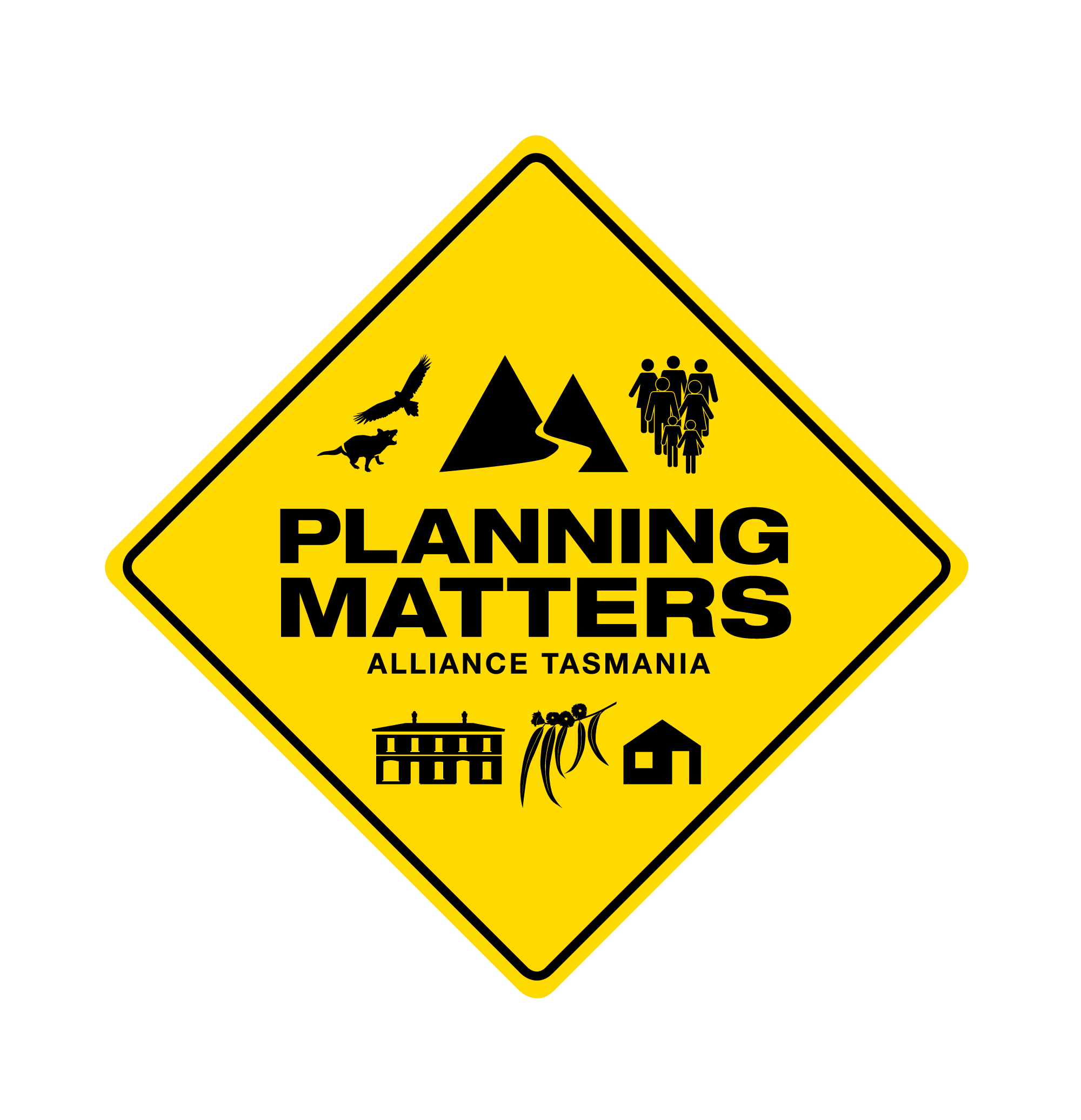Housing and Planning
Summary
There is a critical need for housing – especially social and affordable housing – that is well-designed, sustainable and provides high levels of amenity for communities. The planning scheme can and should facilitate this.
Key Concerns
Despite the critical need for low cost housing, the Tasmanian Planning Scheme contains no provisions to encourage social and affordable housing.
The Tasmanian Planning Scheme currently does not provide an effective strategic framework for delivering quality housing in well designed neighbourhoods with good access to services and infrastructure.
Planning provisions provide limited protection for existing neighbourhood amenity and environmental values.
While the planning system has the potential to enable well-designed housing and neighbourhoods as part of addressing the housing shortfall, the primary causes of the crisis – such as financial and investment regulation, population growth and building industry capacity must be addressed if there is to be a long-term solution.
Lack of effective regulation of Short Stay Accommodation is having a significant impact on the availability and cost of rental properties.
An example of social housing are ‘Elsie’ and ‘Isabel’, two homes created by the Hobart Women’s Shelter, as part of a on-going project working to create additional affordable housing pathways for women and children. Images by Adam Gibson Photography.
Key Recommendations
Good planning, transparent decision-making and the delivery of social and affordable housing need not be mutually exclusive. Good planning can result in delivery of both more and better housing. To achieve this PMAT is of the view that:
- Effective strategic planning at the State and regional level through measures such as Tasmanian Planning Policies (TPPs) and Regional Land Use Strategies should ensure that appropriate housing is provided in locations where it is needed while minimising adverse impacts on other planning system objectives – such as environmental values and neighbourhood amenity;
- Provision of infrastructure to support communities including transport, schools, medical facilities, emergency services, recreation, jobs, training, and public open space. These should be considered/mandated in the planning process – and not as an afterthought;
- Best practice design for houses and neighbourhoods. This should be adopted so that housing developments not only provide a place for people to live but result in better amenity, health and environmental outcomes. Taking a place-based approach to both new developments and regenerating existing neighbourhoods will be important in achieving the best outcomes;
- New developments should contain a proportion of social and/or affordable housing. It is understood that a mandated level of at least 10% social housing (or equivalent developer financial contribution) is a model that has been successfully adopted elsewhere.
- Short stay accommodation can be more effectively regulated to reduce its impact on long term rental availability and cost. As part of the current review of the State Planning Provisions, approval and regulation of short stay accommodation should be made discretionary to allow Councils to limit the impact on the housing market in a way that reflects localised need. The Tasmanian Government could immediately amend Planning Directive No 6 to ensure those Councils still under the Interim Scheme have the capacity to better regulate short stay accommodation.
Background
PMAT understands the critical need for housing, including social and affordable housing. One of our founding concerns was that the Tasmanian Planning Scheme contains no provisions to encourage affordable or social housing. In building resilient communities it must be recognised that housing and homelessness is a Human Rights issue.
Instead of managing housing through Tasmania’s key planning document, the Tasmanian Planning Scheme, in 2018 the Tasmanian Government introduced a fast track land rezone process called the Housing Land Supply Orders (e.g. Housing Order Land Supply (Huntingfield)). Taking this approach compromises strategic planning and transparent decision making. For example, the State Government is the proponent and the assessor. It has also proved ineffective in delivering new housing quickly.
Taking zoning and planning assessments outside the Tasmanian Planning System risks an ad hoc approach to housing that makes an integrated approach more difficult. This works against delivering quality housing outcomes.
What is Causing the Housing Problem?
Understanding the broad context is critical. The Tasmanian Government is arguing that the shortage in availability of social and affordable housing can be addressed– at least in part – through the Housing Land Supply Orders and Homes Tasmania. It is noted that the Homes Tasmania Act 2022 while aimed at alleviating the shortage of social and affordable housing has the potential for adverse impacts by bypassing the planning system and not taking a strategic approach. It is important to look at the broader context of the housing problem.
Some of the factors contributing to the shortage of affordable housing relate to policy settings controlled at the State level, but many others arise from long term national approaches to taxation, financial policy, investment and population growth. The following are key contributors to the current ‘housing crisis’:
- Australia’s very high net immigration rate. It is noted too that Tasmania is pushing population growth targets (650,000 by 2050), but without any proper community consultation or consensus on what the State’s long-term population should be. This is compounded by a lack of strategic planning by the State on where these extra people will live and the provision of infrastructure and services to support them.
- The intent of planning instruments such as the draft Tasmanian Planning Policies is acknowledged but there are few implementation guidelines and they do not articulate clearly to the Regional Land Use Strategies or the State Planning Provisions.
- The State Government’s pursuit of record and growing tourism visitation numbers and consequent uncontrolled short stay accommodation development for tourism reduces long term rental supply and puts pressure on availability and prices. Local Government is constrained at present in responding to short stay accommodation concentrations locally that are contributing to high rents and low housing availability. Using levies, rate loadings or the application of Local Provision Schedules are unlikely to be effective and Councils should be enabled to regulate through the State Planning Provisions (currently under review).
- The raft of Commonwealth controlled policies which promote investment in properties but do little to address social and affordable housing needs.
These include:
- negative gearing and capital gains tax concessions on real estate;
- foreign and interstate investment in real estate;
- interest only home loans; and
- inclusion of real estate as an option for self-managed superannuation.
Our current housing issues can be seen largely as a demand issue associated with population growth and the treatment of housing as a commodity with tax breaks, rather than a basic necessity of life. It should not be regarded primarily as a land supply and planning issue. These requirements are not a major factor in addressing the problem – two decades of planning reforms around Australia appear to have had little effect on solving the affordable housing problem. The root causes must be addressed, as well as building more housing stock.
It is acknowledged that more supply is required in the short term. Nevertheless it must be recognised that the State Government has contributed to the current problems through programs that encourage migration to the State to support population targets that may be unsustainable. This has happened without the investment in the infrastructure and services required and has had a detrimental impact on the lives and opportunities of many Tasmanians trying to access housing. The current population targets – and associated programs – should be reviewed with the aim of reducing pressures on the housing market.
A national approach is also needed. Supply measures already announced need to be accompanied by changes to national policies which encourage real estate investment at the expense of affordable housing.
Related News & Media
Shelter Tasmania 2024
Monitoring the Impact of Short-Term Rentals on Tasmanian Housing Markets

PMAT Submission: Improving Residential Standards in Tasmania, Draft Report July 2024 and associated Medium Density Design Guidelines
PMAT’s founding platform seeks to improve the liveability and wellbeing of all Tasmanians.
One of PMAT’s founding concerns was the poor residential standards of

PMAT Submission – Discussion Paper to inform the Improving Residential Standards in
PMAT was identified as a key stakeholder and was asked to provide feedback on the Discussion Paper to inform the project moving forward.

Support Us
Receive News & Updates from PMAT
Stay informed on what’s happening locally and statewide within Tasmania, and join our community in advocating to protect Tasmania’s future.





